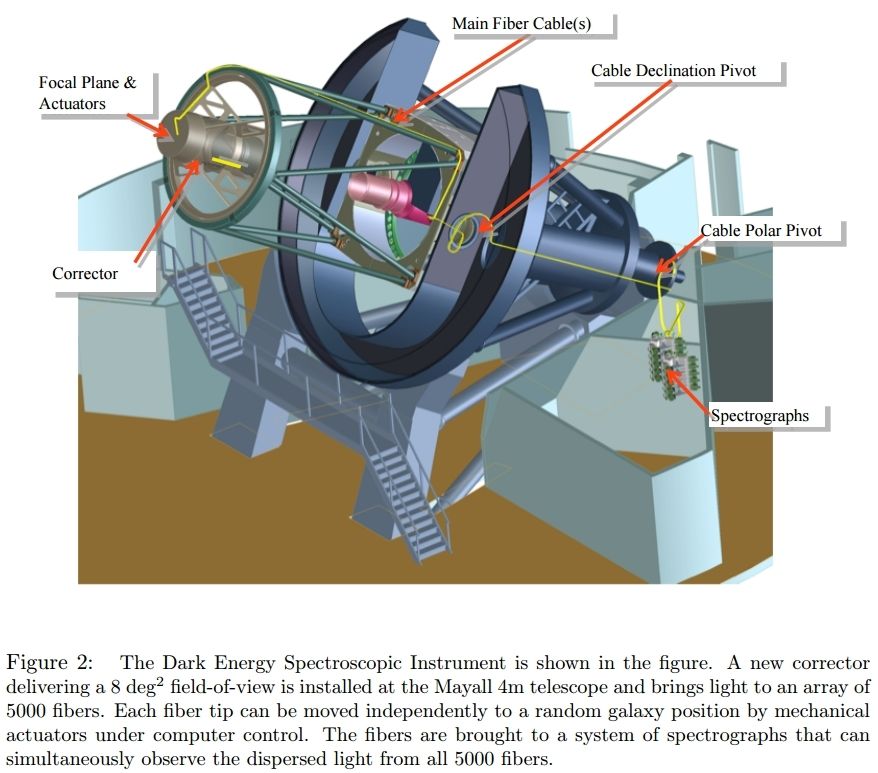CrazyNeutrino said:
New Lenses To Help In The Hunt For Dark Energy
Known as the Dark Energy Spectroscopic Instrument (DESI), this project plans to start with the present day, pinpointing the locations of galaxies in the Universe, and then work backwards into the past. DESI officially kicked off with the recent delivery of two new and improved lenses to the Mayall Telescope at the Kitt Peak National Observatory in Arizona.
more…
Another news article in
http://www.symmetrymagazine.org/article/a-new-pair-of-lenses-for-the-mayall
C1 and C4 began production earlier than the other four lenses because they have the tightest specification requirements. This is a consequence of their large size: C1 and C4 weigh in at 444 pounds and 522 pounds, respectively. Each lens is over 1 meter in diameter. They’ll eventually work in concert with the two aspherical lenses that correct for defects and a pair of lenses with wedges, which hook to motors and rotate to correct for disturbances on Earth.
The new corrector and lenses won’t help take pictures The lenses will focus on distant galaxies, and the corrector will collect the light in 5000 tiny fibers, which will disperse the light on the spectrograph. When we collect the spectra of galaxies in DESI, we are making a 3D map. DESI scientists use baryon acoustic oscillations, subtle correlations in the way galaxies are spread throughout the cosmos, to infer the scale of the map and our distance from those galaxies.
The DESI field of view will be 8 square degrees, about 40 times the disk of the full moon and nearly 3,000 times larger than the field of view of the Hubble Space Telescope. Even with this large field of view, it will take DESI about a year of observing time to cover one-third of the sky. By early 2018, the entire package will be ready to ship and install into Mayall.
